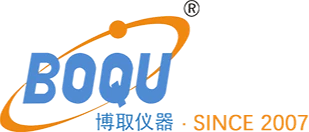Expert in Water Quality Measurement and Water Treatment Project Since 2007
How to Get the Most Out of Your Residual Chlorine Meter
How to Get the Most Out of Your Residual Chlorine Meter
If you own a residual chlorine meter, then you understand the importance of keeping your water safe and drinkable. However, owning a residual chlorine meter is not enough. You have to know how to use it effectively if you want to get the most out of it. Here is a guide on how to get the most out of your residual chlorine meter.
Understanding Residual Chlorine
The first step in optimizing the use of your residual chlorine meter is understanding what residual chlorine means. Residual chlorine refers to the chlorine concentration that remains in water after chlorination. It is usually measured in parts per million (PPM). The primary purpose of residual chlorine is to prevent waterborne diseases and ensure that the water is safe for human consumption.
Choose the Right Equipment
The second step in getting the most out of your residual chlorine meter is choosing the right equipment. There are several residual chlorine meters in the market, and each has its strengths and weaknesses. When selecting the ideal meter, consider the following factors:
1. The purpose of use
2. Operating conditions
3. Cost
4. Accuracy
5. Ease of use
A good residual chlorine meter should meet all of these criteria.
Calibrate your Residual Chlorine Meter
The third step is calibrating your residual chlorine meter. Calibration is required to ensure that your meter is showing accurate results. To calibrate your meter, you will need a standard solution with a known concentration of chlorine. This solution should be used to set your meter to zero and span points. Calibration should be done regularly, preferably before every use.
Understand the Operating Principle of Your Residual Chlorine Meter
The fourth step is understanding how your residual chlorine meter works. Different residual chlorine meters have different operating principles. Some meters use polarographic sensors or colorimeters, while others use photometric sensors. Understanding the operating principle of your meter will help you to use it effectively and troubleshoot in case of any issues.
Maintain Your Residual Chlorine Meter
The final step in getting the most out of your residual chlorine meter is proper maintenance. Maintaining your meter involves:
1. Checking the instrument for damage
2. Replacing damaged parts
3. Proper storage
4. Cleaning
5. Recharging batteries
Proper maintenance will ensure that your meter performs optimally and lasts for a long time.
In conclusion, a residual chlorine meter is an essential tool for ensuring that the water you drink is safe for consumption. To get the most out of your meter, you should understand residual chlorine, choose the right equipment, calibrate your meter, understand its operating principle, and maintain it properly. With these tips, you can use your residual chlorine meter effectively and maintain its accuracy for a long time.
Whether it's automation or artificial intelligence, the rapid convergence of technology and business often determines water analyzer’s competitiveness.
You can find a large selection of quality at BOQU Water Quality Analyzer. Go get your desired one.
Utilizing high technology to manufacture products can afford a fully experience to customers by using water analyzer.
Contact Us
Office Add:No. 118 Xiuyan Road,Pudong New Area,Shanghai,Zip Code:201315,China
Contact us right away
BOQU Instrument focus on development and production of water quality analyzers and sensors, including water quality meter, dissolved oxygen meter, pH sensors, etc.
